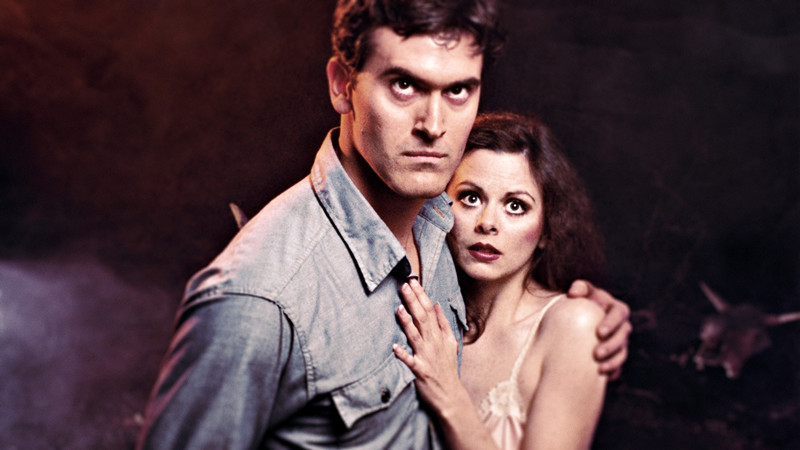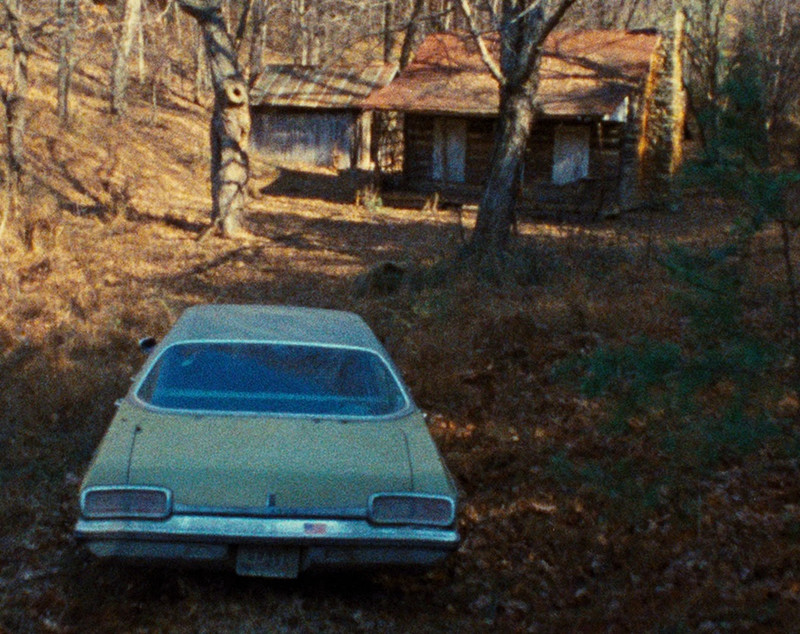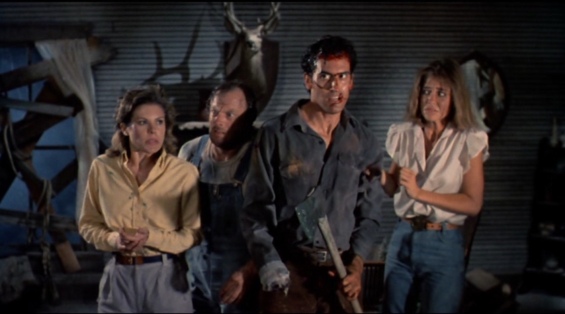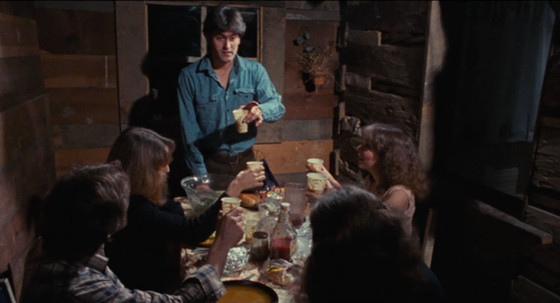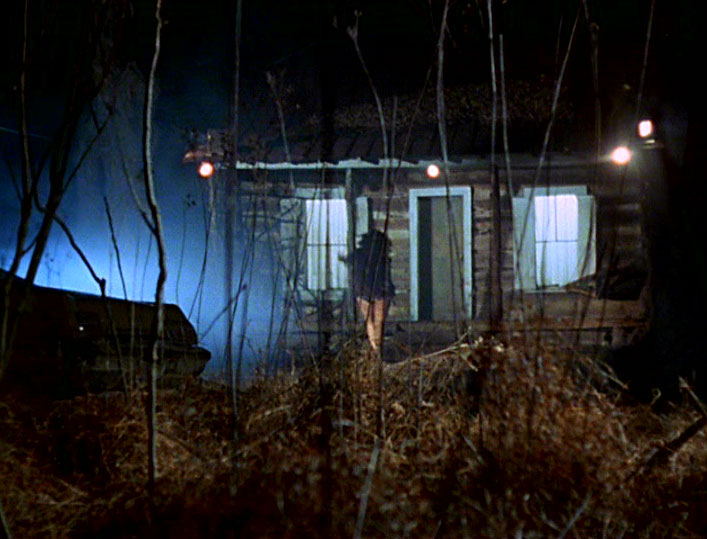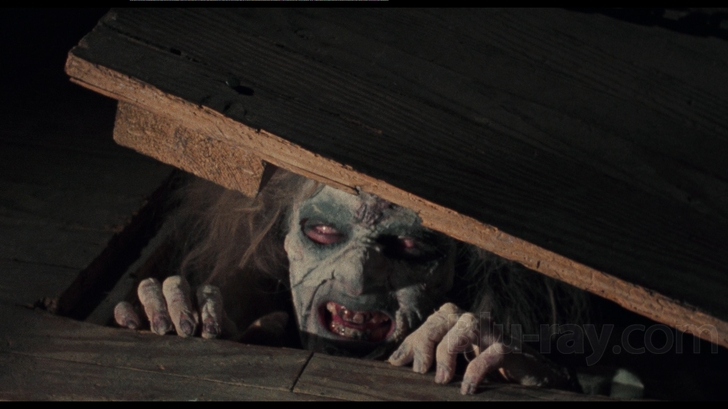If you’re a young filmmaker with an urge to make horror films, don’t let anyone dismiss you and say it’s wrong; some of the finest filmmakers have cut their teeth in the blood-soaked genre of horror. One of the most notable is horror auteur turned blockbuster filmmaker Sam Raimi.
“The Evil Dead” was Raimi’s feature debut as a filmmaker and he made not only a great horror film, but one of the sleeper hits of the ’80s. “The Evil Dead” changed the lives of those involved and made big stars out of both Sam Raimi and it’s star, Bruce Campbell, who would go on to star in both of the sequels and continues to collaborate with Raimi to this day. So, pay attention, and let “The Evil Dead” make you a better filmmaker.
1. Location, Location, Location
Part of what made “The Evil Dead” so effective was it’s location. Raimi and Campbell, who was his right hand man throughout filming, knew that the cabin chosen to shoot in would have to fit the tone of the film perfectly. It’s not an easy task, however, as everyone from the cast is from Michigan but chose a remote cabin outside of Morristown, Tennessee to shoot the film. The crew members stayed at the desolate cabin throughout the shooting of the film, tensions rode high, people got injured and the living conditions were terrible.
However, that being said, the cabin is just as much a character in “The Evil Dead” as Ash, Scotty or Cheryl. Raimi knew the importance of a good location, and so should every filmmaker. If you’re making your first film, do a little research and find a good place. Just because your living room is convenient doesn’t mean it’s best for business.
Also, a fun side note, Raimi apparently was so into the idea of building the mystique around this small cabin that he put out a fake press release about the cabin’s creepy history. If you do some snooping online, you can find it. It’s all fake, but it’s fun to read.
2. Build Atmosphere
An important part of building a scene, especially in a horror film, is atmosphere. Atmosphere combined with your location can make a all the difference and give the illusion that your film has a higher budget.
Sound, image, music, tone, and so much more can go into creating atmosphere, and no two films do it exactly alike. Raimi used a mixture of slow camera moves mixed with chaotic quick cuts to create atmosphere. He’d lull you into comfort, then freak you out. Heavy fog, a droning sound design and a calm instrumental theme to accent not only his visuals but his location when mixed into the blender that is filmmaking also resulted in some effective chilling moments. Experiment a little and get down to the root of what creeps you out, because if you aren’t scared neither will be your audience.
Raimi once remarked that the monster on screen won’t scare you nearly as much as what the audience dreams up in their head. While Raimi isn’t afraid to show us a monster, there’s a lot that goes unseen and becomes unsettling. Remember, a jump scare doesn’t cause a nightmare, but atmosphere will.
3. Pacing
One of the best aspects about “The Evil Dead” that’s rarely mentioned is the pacing and editing. One could say that because no one talks about the edit, it’s effective and seamless, and without the gentle touch of editor Edna Paul (and her assistant Joel Coen of the Coen Brothers) under the supervision of Sam Raimi, “The Evil Dead” might not have been as effective as it was. The film sits at a brisk 85-minute running time, which is a feat considering according to Bruce Campbell, the original script was only 65-pages long.
The film is able to have some slow-burn, suspense building moments all the while running by quickly. The audience never feels bored, each twist and turn comes at the right moment and by the end, it’s chaotic and fun. Your film may be your baby, but don’t hesitate to cut things out and change your pacing to make a better film as in the long run you want as many people to like it as possible.
4. Free Up Your Camera
“The Evil Dead” has a lot going for it, especially being made by such a young crew, and one of it’s strongest points is the camera work. Sam Raimi and his cinematographer Tim Philo worked tirelessly to create a visual style unlike anything else that was being made. Part of the style came from having no money for real equipment or rigs, but the rest was pure creativity.
What makes the camera work in “The Evil Dead” stand out is that it doesn’t follow any specific logic; at times the camera is completely still and observes in long, static shots, other times the camera is handheld and being rushed around and snapping back and forth in a very chaotic way. Raimi and Philo didn’t follow any specific rules and instead chose shots that worked for each specific moment in a way to enhance the story and the sense of dread.
The most memorable use of the camera comes during the climax of the film where Raimi decided he wanted to shoot almost a majority of the scene with Dutch angle as a way to build atmosphere and mystique. Think outside the box and don’t be afraid to take your camera off it’s tripod once in awhile.
5. Juxtaposition
Another part of what makes “The Evil Dead” work is the way it mixes gruesome terror, and lighter notes. I won’t go far as to say it’s a comedy, because it gives the audience the wrong idea as the first film is definitely horror through and through while “Evil Dead II” takes on a more slapstick tone.
Sam Raimi is a master of tone and knows how to work in brief moments of levity or absurdness to not only help the tension, but to accent the horror happening on screen. “The Evil Dead” achieves a lot of it’s more absurd moments through it’s sound design, most notably towards the end where Ash is in the basement looking for the demonic Cheryl. It’s weird, but fun, as a record player flips on and plays a Jazzy 1920s tune that feels out of place in a horror film.
A light bulb fills up with blood, but the sound used is reminiscent of coffee being poured into a mug. It’s nothing compared to the infamous freakout scene in “Evil Dead II”, but it still stands up as one of the most effective scenes in the film as we the audience goes mad along with Ash.
Raimi is an avid fan of the Three Stooges and utilizes his love for slapstick throughout his body of work. However, comedy and horror share a common denominator in timing. If the timing is off in either case, a laugh or a scare could be ruined. By mixing the two we’re left with a refreshing blend that could almost be satirical if it wasn’t made so genuine. None of the juxtaposition of comedy and horror feel forced because it all feels organic.
